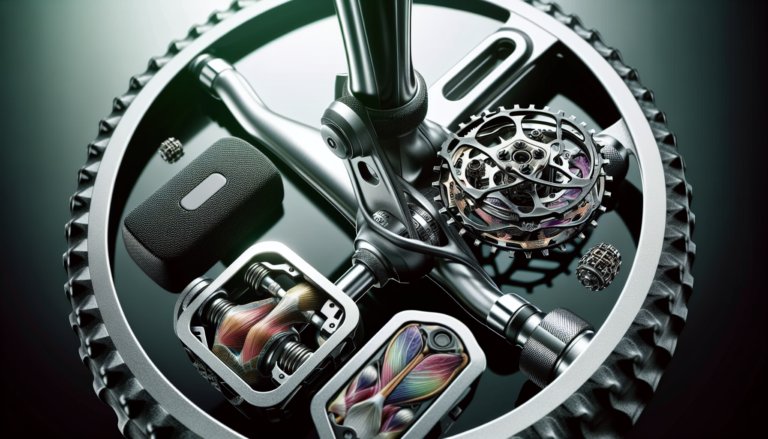Cycling is an excellent form of exercise that engages multiple muscle groups, providing a full-body workout while enjoying the outdoors or the comfort of your home. When you hop on a bike, you’re not only improving your cardiovascular health but also strengthening and toning various muscles in your lower body, core, and upper body. In this article, we’ll explore the key muscle groups involved in cycling and how you can optimize your muscle engagement for a more efficient and effective ride.
Introduction to Cycling and Muscle Engagement
Overview of Muscle Groups Engaged in Cycling
Cycling is a low-impact activity that primarily targets the lower body muscles, including the quadriceps, hamstrings, glutes, and calf muscles. These muscle groups work together to generate the power needed to propel the bike forward. Additionally, cycling engages the core muscles for stability and the upper body muscles for balance and control.
The primary movements in cycling involve hip and knee extension, which are driven by the glutes and quadriceps, respectively. The hamstrings assist in the upward motion of the pedal stroke, while the calf muscles support the downward motion. Engaging these muscle groups effectively is key to maximizing your cycling performance and efficiency.
Lower Body Muscles Worked by Cycling
Quadriceps: The Powerhouse of Pedaling
The quadriceps, or quads, are the largest and most powerful muscle group in the body, and they play a crucial role in cycling. Located on the front of the thigh, the quads are responsible for extending the knee during the downward phase of the pedal stroke. Strong quads are essential for generating the force needed to push the pedals and propel the bike forward.
To engage your quads effectively, focus on maintaining a consistent pedaling motion and avoid letting your knees collapse inward. Incorporating exercises like squats, lunges, and leg presses into your strength training routine can help build and maintain strong quads for cycling.
Glutes: Enhancing Hip Extension
The gluteal muscles, or glutes, are another key muscle group involved in cycling. The glutes are responsible for extending the hip, which occurs during the downward phase of the pedal stroke. Engaging your glutes helps generate power and stability, especially when climbing hills or accelerating.
To activate your glutes while cycling, focus on pushing through your heels and maintaining a slight forward lean. Exercises like glute bridges, step-ups, and single-leg deadlifts can help strengthen your glutes and improve your cycling performance.
Hamstrings: Assisting the Upward Stroke
The hamstrings, located on the back of the thigh, work in conjunction with the glutes to flex the knee and assist in the upward phase of the pedal stroke. Strong hamstrings help pull the pedal back up, contributing to a smooth and efficient pedaling motion.
To engage your hamstrings while cycling, focus on pulling up on the pedals during the upward stroke. Incorporating exercises like hamstring curls, deadlifts, and nordic curls into your strength training routine can help build and maintain strong hamstrings for cycling.
Calf Muscles: Supporting Pedal Motion
The calf muscles, consisting of the gastrocnemius and soleus, are responsible for plantar flexion, or pointing the foot downward. In cycling, the calf muscles assist in the downward phase of the pedal stroke, helping to push the pedal forward. Strong calf muscles contribute to overall pedaling efficiency and power.
To engage your calf muscles while cycling, focus on maintaining a stable foot position on the pedals and avoid excessive heel drop. Exercises like calf raises, both seated and standing, can help strengthen your calf muscles for cycling.
Core Muscles and Their Role in Cycling
Importance of Core Stability
While the lower body muscles are the primary movers in cycling, the core muscles play a crucial role in maintaining stability and balance on the bike. The core muscles, including the abdominals, obliques, and lower back, work together to keep the upper body stable and aligned, especially when riding out of the saddle or navigating turns. A strong core helps prevent excessive upper body movement, which can lead to energy wastage and reduced efficiency.
Incorporating core-specific exercises like planks, russian twists, and bicycle crunches into your training routine can help build and maintain a strong, stable core for cycling.
Engaging Core Muscles During Different Cycling Positions
The engagement of core muscles varies depending on your cycling position. When riding in a seated position, your core muscles work to maintain a stable and upright posture, allowing for efficient power transfer from your legs to the pedals. When riding out of the saddle, your core muscles become even more active, working to stabilize your upper body and maintain balance as you shift your weight over the handlebars.
To engage your core muscles effectively while cycling, focus on maintaining a neutral spine and avoiding excessive upper body movement. Practice riding in different positions, both seated and standing, to develop core strength and stability specific to cycling.
Upper Body Muscles Involved in Cycling
Balancing and Controlling the Bike
While the upper body muscles are not the primary movers in cycling, they do play a role in maintaining balance and control on the bike. The muscles of the arms, shoulders, and upper back work together to support your upper body and steer the bike, especially when riding out of the saddle or navigating turns. Strong upper body muscles can help reduce fatigue and improve overall cycling comfort.
To engage your upper body muscles while cycling, focus on maintaining a relaxed grip on the handlebars and avoiding excessive tension in your shoulders and neck. Incorporating upper body exercises like push-ups, rows, and shoulder presses into your strength training routine can help build and maintain strong upper body muscles for cycling.
Optimizing Muscle Engagement Through Cadence
Recommended Cadence for Efficient Cycling
Cadence, or the number of revolutions per minute (RPM) of the pedals, plays a significant role in muscle engagement and cycling efficiency. The optimal cadence for most cyclists falls between 80 and 100 RPM, although this can vary depending on individual preferences and cycling goals. Maintaining a consistent cadence within this range helps optimize muscle engagement and reduces the risk of fatigue and injury.
To find your ideal cadence, experiment with different RPM ranges and pay attention to how your muscles feel. Aim to maintain a cadence that allows for smooth, consistent pedaling without excessive strain on your muscles.
Impact of Cadence on Muscle Engagement
The cadence at which you pedal affects the way your muscles are engaged during cycling. Lower cadences, typically below 80 RPM, require more force to turn the pedals, placing greater emphasis on the quadriceps and glutes. Higher cadences, above 100 RPM, shift the focus to the cardiovascular system and require less muscular force, engaging the hamstrings and calf muscles to a greater extent. Varying your cadence during a ride can help target different muscle groups and prevent overuse injuries.
To optimize muscle engagement through cadence, incorporate both high and low cadence intervals into your rides. Practice pedaling at different RPMs to develop a feel for how your muscles respond and adapt your training accordingly.
Strength Training for Cyclists
Effective Strength Training Exercises
In addition to cycling, incorporating strength training exercises into your routine can help build and maintain the muscle strength and endurance needed for optimal cycling performance. Some effective strength training exercises for cyclists include:
- Squats: Target the quadriceps, glutes, and core muscles
- Lunges: Strengthen the quads, glutes, and hamstrings
- Deadlifts: Work the glutes, hamstrings, and lower back
- Calf Raises: Build strength and endurance in the calf muscles
- Planks: Develop core stability and endurance
Aim to incorporate strength training sessions 2-3 times per week, focusing on exercises that target the key muscle groups used in cycling.
Complementing Cycling with Strength Training
While cycling alone can help build and maintain muscle strength, incorporating dedicated strength training sessions into your routine can provide additional benefits. Strength training helps address muscle imbalances, reduce the risk of injury, and improve overall cycling performance. By building strength in the key muscle groups used in cycling, you’ll be able to generate more power, maintain better posture, and ride more efficiently.
To complement your cycling with strength training, aim to schedule your strength sessions on non-cycling days or after easier rides. This allows your muscles adequate time to recover and adapt to the training stimulus.
Recovery and Muscle Care for Cyclists
Importance of Warm-Up and Cool-Down
Proper warm-up and cool-down routines are essential for muscle care and injury prevention in cycling. A warm-up helps prepare your muscles for the upcoming activity by gradually increasing blood flow, raising muscle temperature, and improving joint mobility. A cool-down, on the other hand, helps promote recovery by gradually reducing heart rate, preventing blood pooling, and initiating the muscle repair process.
To incorporate effective warm-up and cool-down routines into your cycling, aim to dedicate 5-10 minutes before and after your ride. Begin with light, easy spinning and gradually increase intensity during the warm-up. For the cool-down, reduce your pedaling intensity and finish with some light stretching.
Active Recovery Techniques
Active recovery involves engaging in low-intensity exercise to promote recovery and reduce muscle soreness after cycling. Some effective active recovery techniques for cyclists include:
- Easy spinning: Pedaling at a low intensity helps promote blood flow and reduce muscle stiffness
- Yoga: Gentle yoga poses can help stretch and relax tired muscles
- Swimming: The low-impact nature of swimming provides a gentle way to promote active recovery
- Walking: Light walking helps keep the muscles moving without excessive strain
Incorporating active recovery sessions into your routine, especially after harder rides or races, can help speed up the recovery process and reduce the risk of overuse injuries.
In conclusion, cycling engages a wide range of muscle groups, primarily targeting the lower body muscles while also involving the core and upper body for stability and control. By understanding the key muscles used in cycling and how to optimize their engagement through proper technique, cadence, and complementary strength training, you can maximize your cycling performance and enjoyment. Remember to prioritize recovery and muscle care, incorporating warm-up, cool-down, and active recovery techniques to keep your muscles healthy and strong for many rides to come.






